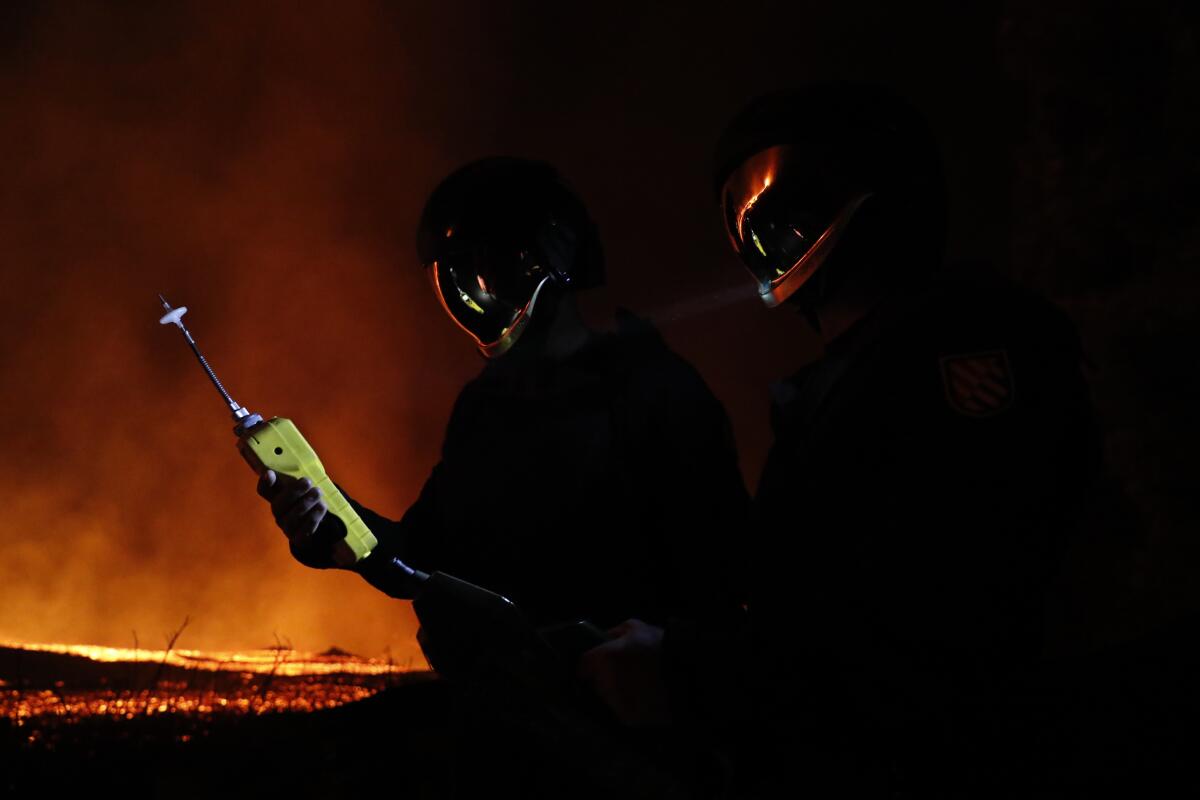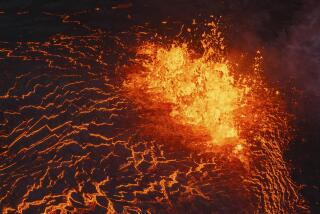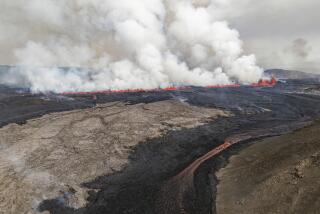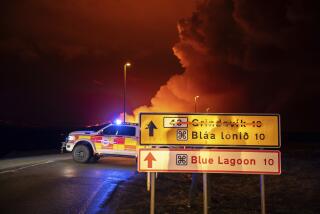Lava from Spanish island volcano rolls slowly toward the sea

LOS LLANOS DE ARIADNE, Canary Islands — Lava flowing from a volcano in Spain’s Canary Islands picked up its pace on its way to the sea Tuesday, but scientists said it was impossible to estimate when the stream of molten rock would reach the shore.
Authorities said the lava had moved on the island of La Palma to within 800 meters of the Atlantic Ocean as of Tuesday morning, nine days after the volcano’s eruption. When it eventually meets seawater, the lava could trigger explosions and the release of toxic gas.
By the afternoon, officials said various factors dictated the unpredictable speed of the lava flow, including its departure from a path over an earlier flow that had hardened. The river of cooled lava had helped the moving flow slide along.
“The lava cools down as time passes and it meets uneven ground, which slows it down,” said Miguel Ángel Morcuende, technical director of the Canary Islands emergency volcano response department. “And if it comes off the highway it was going along, that slows it even more because it spreads out wider.”
A small hill and a built-up area also stood in the lava’s way, and the shore area is flatter than the hills the lava has been flowing down.
For days, officials have nervously awaited the time when lava from the Sept. 19 eruption reaches the Atlantic, but the volcano has been erratic. After calming down on Monday, the volcano became more explosive again overnight.
Authorities said they don’t expect the slow-moving lava to create a large disruption on the coast. But Eugenio Fraile, a researcher at the Spanish Oceanography Institute, told Cadena Ser radio that only scientists wearing protective gear will be inside a security perimeter when the flow hits the ocean.
The National Geographic Institute detected six earthquakes Tuesday in the area of the eruption, with the strongest measured at magnitude 3.3.
La Palma, home to about 85,000 people, is part of the volcanic Canary Islands, an archipelago off northwest Africa. The island is roughly 22 miles long and 12 miles wide at its broadest point.
Lava from the eruption has devoured everything in its path, destroying 589 buildings and 13 miles of roads on La Palma. The lava now covers 637 acres, mostly farmland, according to a European Union satellite monitoring agency.
No deaths or serious injuries have been reported, thanks to the prompt evacuation of over 6,000 people.
But local people have lost their homes and their livelihoods at the same time. Farming is one of the island’s economic mainstays, along with tourism, and the lava and ash have ruined crops and irrigation systems and endangered aviation; they also pose a significant health risk to those nearby.
No flights went in or out of La Palma’s airport for a fourth straight day because of a huge ash cloud. Volcanic ash is hazardous for aircraft engines.
The Spanish government announced after its weekly Cabinet meeting Tuesday that it’s providing an immediate grant of 10.5 million euros ($12.3 million) to buy 107 properties to rehouse local people and also provide them with income aid.
More aid, including for the rebuilding of public infrastructure, will be sent once the current emergency is over, government spokeswoman Isabel Rodríguez said.
The volcano has so far spewed out more than 1.6 billion cubic feet of molten rock, according to the Canary Island Volcanology Institute.
More to Read
Sign up for Essential California
The most important California stories and recommendations in your inbox every morning.
You may occasionally receive promotional content from the Los Angeles Times.










